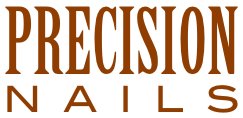Article Published in Stylist Magazine, May 2011
If you hadn’t already noticed, nail color has made a tremendous comeback. The renewed focus on colorful nails owes much to the incredible popularity and abundance of colored gel and gel-polish products. These products promise no drying time because they light-cure, extended wear with no chipping and soak-off removal (more or less). Consumers have responded to clever marketing by contacting salons to request a “lacquer manicure,” or a “three-week manicure,” even when they don’t fully understand what the service entails. This trend has been so pervasive that brands known primarily for polish and natural nail products have launched their own gel lines. And while this may seem like bad news for polish manufacturers, the recent acquisitions of Essie by L’Oreal and OPI by Coty suggest otherwise. No doubt, the value of these professional brands lie in their growth potential beyond salons. And as expected, these brands have expanded their presence in retail and drug stores, competing alongside Sally Hansen (also owned by Coty) and other brands that consumers have had access to for years.
While these recent developments provide consumers many options, they also prompt professionals to question whether polish has lost its appeal as a salon service and product? I cannot answer this question for every salon owner or nail professional, but for me, the answer would be decidedly no. Polish is not the perfect product; an expert application can be a challenge for the professional, and the patience to let it dry, a challenge for the client. But after decades of reliable performance, polish remains an integral part of my professional nail services. What polish lacks in drying speed and durability, it more than makes up for in price, color range and ease of application and removal, with no additional equipment necessary. Moreover, just as my stylist friends don’t complain about the availability of hair coloring products, I won’t complain about the availability of polish. My clients still rely on my application skills, and they want to test colors before they purchase.
The minimal supplies I use to polish include nail wipes (non-woven sponges), pure acetone in a pump dispenser, base coat (needed for natural nails only), polish, top coat and a clean-up brush (my favorite: a #4 oval taklon). Application begins with removing any existing polish and/or oils from the nails using nail wipes moistened with acetone.
The speed and accuracy of my polish application depends largely on my positioning. I hold the client’s finger firmly from underneath with my left thumb and forefinger, the polish bottle in the palm of my left hand and the bottle cap/brush with my right thumb and forefinger. When removing the brush from the polish bottle, I wipe against the neck so that polish remains on one side of the brush only. For more precise brush placement, I extend my right pinky to rest against the three other fingers of my left hand. When placing the brush at the base of the nail, it’s my goal to have polish be close to, but not touching, the skin. Each stroke toward the edge of the nail should be smooth and straight, and slightly overlapping to cover the entire surface. The fewer the strokes, the better. Starting at the center of the nail and working toward either sidewall, or from one sidewall and working across to the other, is a matter of personal preference. (I happen to start on the left side and work toward the right.) While polishing, I prefer to gently rotate the client’s fingers than tilt my head.
After each layer of polish, I place that hand under a polish-drying fan that circulates room-temperature air while I polish the other hand. Drying between layers reduces the amount of time clients wait to dry at the end of the service. For sheer colors, I generally apply only one layer of color; for opaque colors, two thin layers provide better coverage. There should not be any excess polish on the underside of the nail, or on the surrounding skin. Before applying top coat, I use my clean-up brush dipped in acetone to perfect the perimeter of the polish. After top coat is applied, the client waits another 3-5 minutes under the polish-drying fans before leaving the salon.
That clients can, with varying degrees of competence, polish their own, or a friend’s, nails makes it ideal for retailing. Displayed attractively, polish virtually sells itself. Let your clients choose their favorite color from a well-stocked, dust-free retail display, rather than from the bottles you use to polish. At my salon, we stock a minimum of 3 bottles each of more than 200 different colors, arranged according to color. We store one bottle of every available color alphabetically in the back room for use during services. Clients can also request to test colors using these bottles. For testing purposes, we place a piece of clear plastic tape on the client’s hand and dab polish there instead of directly on their nails.
There’s no need or scientific reason to advise clients to purchase a bottle for salon use. Frightening clients about the possibility of cross-contamination is not a valid marketing strategy. If bacteria and fungus were able to thrive among polish ingredients and subsequently be transmitted to other clients, there might be cause for concern. However, this is not the case. According to research conducted by chemists Paul Bryson, Ph.D. and Doug Schoon, “nail polish quickly destroys microbes that are introduced into it. . . . When partially-used bottles of polish were repurchased from salons after actual use on multiple customers, examination by an independent lab showed no trace of microbial contamination whatsoever.” That’s bad news for microbes, but good news for those of us who love polish.
By Jaime Schrabeck, Ph.D.




